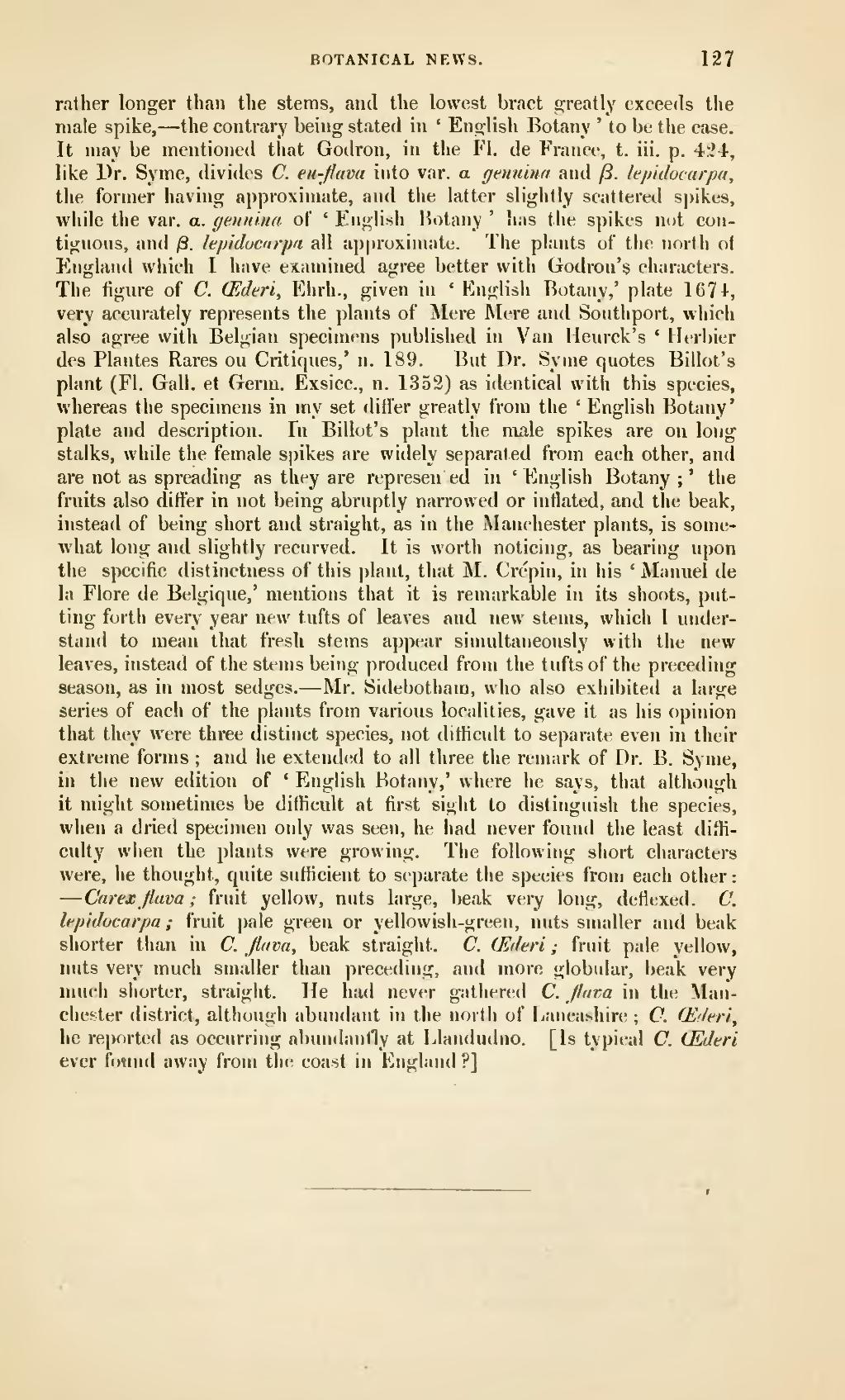BOTANICAL NEWS. - ,127
rather longer than the stems, and the lowest bract greatly exceeds the male spike, — the contrary being stated in ' English Botany ' to be the case. It may be mentioned that Godron, in the Fl. de France, t. iii. p. 424, like Dr. Syme, divides C. eu-flava into var. a gemiina and /3. lepidocarpa, the former having approximate, and tlie latter slightly scattered spikes, while the var. a. gennina of ' English Botany ' has the spikes not con- tignous, and /3. lepiducirpa all approximate. The plants of the north of England which I have examined agree better with Godron's characters. The figure of C. CEderi, Elirh., given in 'English Botany,' plate 167+, very accurately represents the plants of Mere Mere and Southport, which also agree with Belgian specimens published in Van Heurck's ' Herbier des Plantes Rares ou Critiques,' n. 189. But Dr. Syme quotes Billot's plant (Fl. Gall, et Germ. Exsicc, n. 1352) as identical with this species, whereas the specimens in my set differ greatly from the ' English Botany' plate and description. In Billot's plant the male spikes are on long stalks, while the female spikes are widely separated from each other, and are not as spreading as they are represeu ed in ' English Botany ; ' the fruits also differ in not being abruptly narrowed or inflated, and the beak, instead of being short and straight, as in the Manchester plants, is some- Avhat long and slightly recurved. It is worth noticing, as bearing upon the specific distinctness of this plant, that M. Crcpin, in his ' Manuel de la Flore de Belgique,' mentions that it is remarkable in its shoots, put- ting forth every year new tufts of leaves and new stems, which I under- stand to mean that fresh stems appear simultaneously with the new leaves, instead of the stems being produced from the tufts of the preceding season, as in most sedges. — Mr. Sidebothara, who also exhibited a large series of each of the plants from various localities, gave it as his opinion that they w^ere three distinct species, not difficult to separate even in their extreme forms ; and he extended to all three the remark of Dr. B. Syme, in the new edition of ' English Botany,' where he says, that although it might sometimes be difficult at first sight to distinguish the species, when a dried specimen only was seen, he had never found the least diffi- culty when the plants were growing. The following short characters were, he thought, quite sufficient to separate the species from each other : — Carex pava ; fruit yellow, nuts large, beak very long, detlexed. C. lepidocarpa ; fruit pale green or yellowish-green, nuts smaller and beak shorter than in C. Jluva, beak straight. C. (Ederi ; fruit pale yellow, nuts very much smaller than preceding, and more globular, beak very much shorter, straight. He had never gathered C JIava in the Man- chester district, although abundant in the north of Lancashire ; O. CEderi, he reported as occurring abundantly at Llaiuludno. [Is typical G. (Ederi ever found away from the coast in England ?]
�� �
